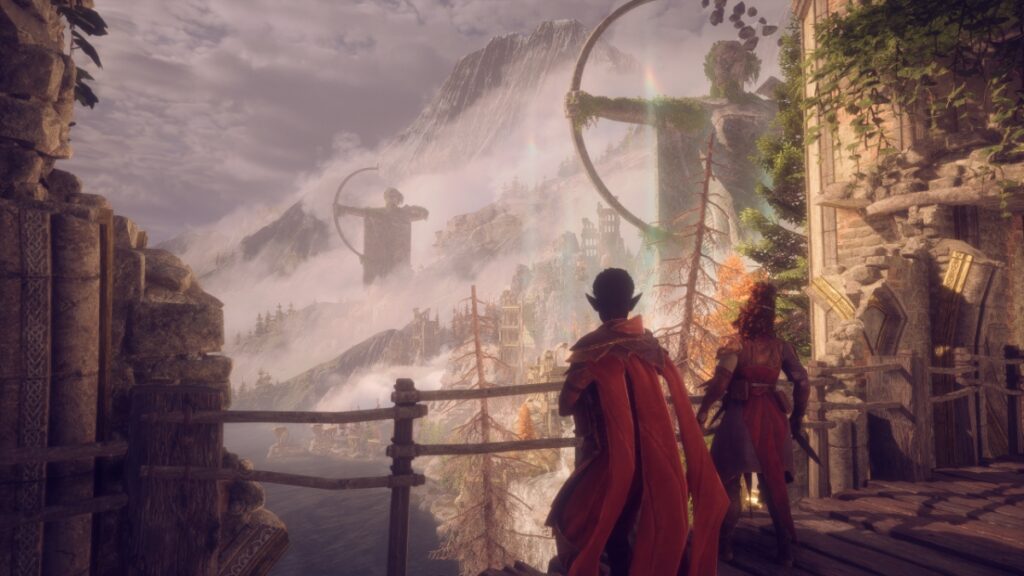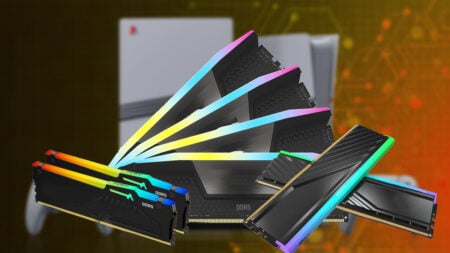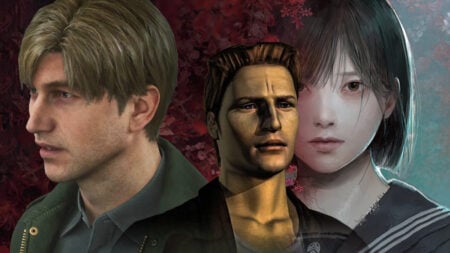Skip To...
Dragon Age: The Veilguard is an RPG that doesn’t know what role it wants to play. Like the wild card in your D&D group, it’s a source of excitement and frustration in almost equal measure. Its love of high fantasy combat is as obvious as its passion for inclusive narratives. When Veilguard missteps, it’s because BioWare’s vision flickered and blurred, losing sight of the high-concept escapade through empathy it once envisioned. Rook’s tale is a fun but flawed adventure, and while it falls short of its franchise’s pinnacle, its virtues are worthy of celebration, whatever Solas thinks.
Dragon Age: The Veilguard Review

A pair of elven gods have escaped their imprisonment, and now all of Thedas is in peril. As Rook, you’ll lead seven companions on an action-packed adventure to battle the gods. The high fantasy stakes don’t get much higher, but the game’s narrative often undercuts itself. Rook’s dialogue and decisions often diminish the immersion, as do a string of shallow conversations and blindspots in the narrative. The result is a series of showy setpieces and combat encounters that stitch together an underwhelming story across dozens of hours.
Story: Solas and a World Without Solace

The Veilguard begins, self-consciously, in a tavern. Untold campaigns have started this way, something Dragon Age could not be more aware of, even quipping about it in the opening cutscene. It’s the first signal that Veilguard‘s arrow may be sailing wide of the mark. The Dread Wolf’s actions spring two elven gods from prison, threatening the world with danger as grave as the Darkspawn. It’s setting up a story of found family and ragtag heroes, but the approach is clumsy. Knowledge of the previous games isn’t mandatory, but some characterizations feel threadbare without it.
Significant social issues like the Tevinter slave trade and poverty are largely ignored. Even the religious and political significance of the two gods is presented in a largely uncritical manner. There are two big problems with that. The first is that nuanced explorations of thorny issues are a hallmark of the previous Dragon Age games. The second is that Veilguard‘s many subplots, in particular those that explore gender dynamics, prove that the game is interested in and capable of such nuanced explorations. Veilguard is the perfect vehicle for a pointed cultural critique, but we never get it.

The game isn’t without its triumphs, however. Veilguard makes great strides toward inclusivity and representation. Though that may start with top surgery scars and customizable larynx, it ripples throughout the game’s plots. It’s heavy-handed but sincere in its desire to meet people where they are and yet push them to be better. Embarrassingly few AAA games take a position as clear as Veilguard. Trans and non-binary people having a right to exist isn’t a matter of debate. What a relief to have a game just say it.
Setting aside identity and intersectionality in favor of dragons and wayward elf gods, Veilguard‘s main plot struggles to find its footing. It’s a loving retread but a retread nonetheless, and The Lighthouse and its budget Farum Azula vibes can’t save it from the echoes of its antecedents. The story is often self-aware in all the wrong ways, too, like a friend who thinks they’ve said something funny and now won’t stop winking and nudging you. Veilguard is a so-so entry point for new players, but even experts in its story and setting may blanch at some creative decisions.
Gameplay: Cardboard Allies and Conversations

Combat looks great in Dragon Age: The Veilguard, but it’s rougher to the touch. A chunky, node-based skill tree and at-will respeccing make trying out playstyles a pleasure. Unfortunately, combat tends to devolve into a scrum of flashy SFX and cooldown management. Spells crackle and flash, inflicting various status effects and setting enemies up for lethal detonations. It encourages team combos, but that’s about as deep as it gets. Even the difference between magic and martial classes melts away, with little need to diversify or theorycraft synergies. Every class is fun but they hardly feel unique.
I enjoyed every fight in Veilguard, but that’s despite some critical flaws. Your companions can’t die or get KO’d. Other than pausing to activate your allies’ skills, you’re free to ignore them. That’s not inherently bad, but it does undercut Veilguard‘s themes. Allies hover about like fantasy-skinned drones, chucking the occasional spell but absent all personality. They’re useful, even essential to racking up the elemental detonations that chew through enemy shields, but they hardly feel alive.

Conversations don’t fare any better. Your choices don’t always line up with Rook’s actual dialogue, creating some jarring moments and creating one of the least immersive experiences I’ve had with a AAA RPG this year. Veilguard has some good worldbuilding, but (for the first time in the franchise) its dialogue is a net negative. It feels like there are fewer significant choices, flatter characters, and more awkward writing overall. Exploration is only a minor part of Veilguard‘s semi-linear world, leaving just dialogue and combat, neither of which can take the slack. Its conversations feel designed by committee, the antithesis of the series’s past creativity.
Mechanically, Veilguard is a mixed bag. When its ideas are good (like items that rise in rarity when you find a duplicate), they’re great. When its ideas are bad (like the perpetual hunt for random metals and other crafting materials), they’re awful. The best part of the franchise is its story, and the narrative’s missteps throw the game’s mechanical problems into stark relief. Veilguard has more in common with most generic fantasy games than past Dragon Age installments, trading much of its strategic depth and personality for a more streamlined and shallower alternative. Getting to decorate your room in The Lighthouse is a shabby substitute for the depth Dragon Age fans expect.
Graphics & Audio: Blast and Bellow

Rook draws their staff close as a mystical bubble surrounds them, channeling their mana. Ahead, Darkspawn prowl the battlefield, clashing with Bellara and Davrin. The evening air crackles and explodes with arcane fireworks as the Veil Jumper and Gray Warden beat back the beasts. With a flourish, Rook dismisses the bubble. With another, they summon a wall of fire, consuming the Darkspawn with a single stroke. Through the infernal flames, another demon spies Rook. The mage’s next spell strikes first.
Industrial Light and Magic would be proud of these SFX. It’s common for multiple AoE’s to pop on top of one another, lightning licking at enemies before ice enshrines them and fire cooks the boneyard. Screenshots don’t capture how good battles look in motion. That said, reused assets, glitchy textures, and lagging facial animations often drag down the scenery. There are some wonderful set pieces, but most areas don’t capture what makes Thedas unique. It’s an interesting setting, but Veilguard is a poor showcase of its virtues.

Even when the graphics let it down, Veilguard‘s artful direction is often enough to carry it. Rook’s conversations with Solas, veiled in black and white, a literal chasm separating the two, are a particular treat. Many moments feel ripped straight from the concept art. It’s easy for such scenes to feel overcooked and muddled, but Veilguard escapes that trap. A rollicking (if generic) soundtrack and quality foley help, as does the voice acting. Even when the talented cast is let down by lackluster writing, their strong performances shine through.
Conclusion: Who’s Afraid of Dread Wolf?

I experienced no crashes but considerable lag, rendering problems, floating trees, and other graphical issues. The Veilguard is a good RPG but a mediocre Dragon Age. In a series defined by player choice and narrative depth, it feels flattened and sanitized. Its exploration of gender and community shows Veilguard at its most focused and compassionate, but that consideration burns away when the subject shifts. If you’re looking for pyrotechnic magic and a misunderstood (and dateable) hero or two, you can play Dragon Age: The Veilguard on PC, PlayStation 5, and
Review copy received from Publisher.
Dragon Age: The Veilguard (PC Reviewed)
Undermined by its own storytelling and technical troubles, Dragon Age: The Veilguard is a tale of community but never quite finds its home.
Pros
- Enjoyable builds and combat
- Realistic representation and storytelling
- Spectacular combat SFX
Cons
- Narrative missteps
- Shallow companion AI
- Glitches and lag








